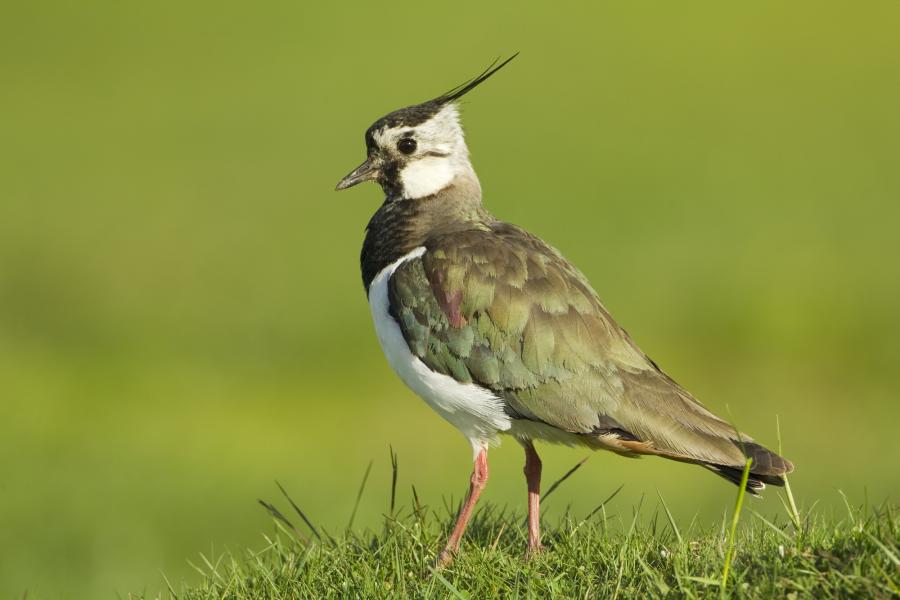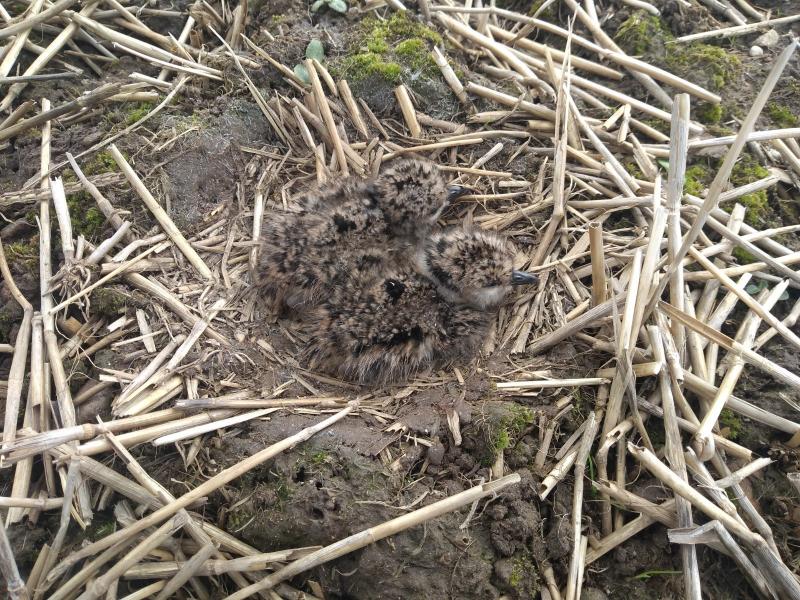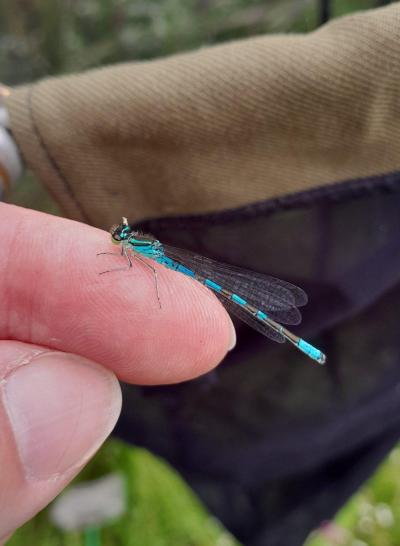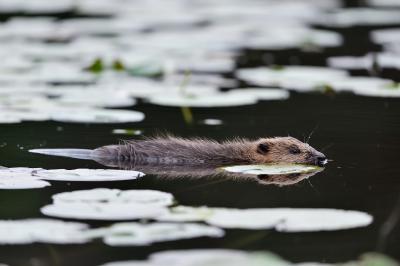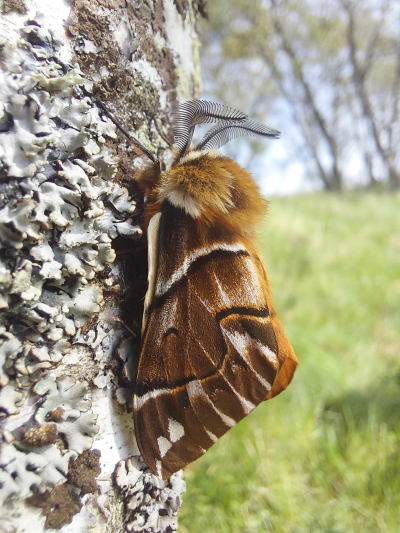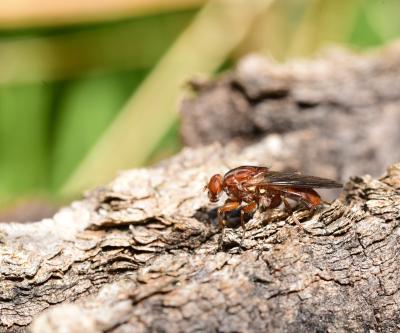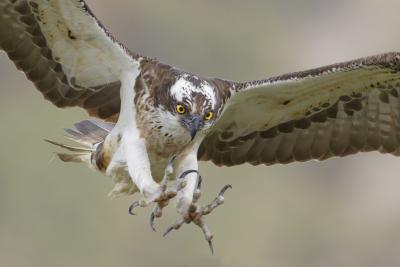Lapwing
Vanellus vanellus

Lapwings come to the Cairngorms National Park during the summer months to breed. This type of wader feeds mainly on earthworms, leatherjackets, and insects and their larvae, using its sensitive bill to dig under the soil’s surface.
Factsheet
Weight: 0.1 to 0.3kg
Lifespan: Five years
Best time to spot: Summer
The lapwing can look black from a distance, but its feathers are actually a beautiful mix of green, purple and red on the back and wings, and there’s an orange vent under its tail. The easiest way to identify a lapwing, though, is by the crest that swoops upwards from the back of its head, like a little aerial.
The lapwing’s contact call - the one birds use to share their location while flying and feeding - likely inspired its most common nickname of peewit. This loud, shrill call sounds much like someone twiddling the knobs on a synthesiser.
Lapwings choose a ‘weoo’ call when flocking together, and in spring, a more elaborate wheezing note which combines with the humming of its wings. It’s thought that this range of calls inspired all the other names the lapwing goes by: choose from green plover, chewit, teeack, peasiewheep, tuets and pyewipe.
Lapwings are on the UK Conservation Red List due to significant declines in population - over 50% in the 30 years from 1994 to 2024. This has largely been caused by a loss of mixed farming, spring cropping and the intensification of grassland management.
Did you know?
Lapwings come to the Cairngorms National Park during the summer months to breed. This type of wader feeds mainly on earthworms, leatherjackets, and insects and their larvae, using its sensitive bill to dig under the soil’s surface.
Factsheet
Weight: 0.1 to 0.3kg
Lifespan: Five years
Best time to spot: Summer
The lapwing can look black from a distance, but its feathers are actually a beautiful mix of green, purple and red on the back and wings, and there’s an orange vent under its tail. The easiest way to identify a lapwing, though, is by the crest that swoops upwards from the back of its head, like a little aerial.
The lapwing’s contact call - the one birds use to share their location while flying and feeding - likely inspired its most common nickname of peewit. This loud, shrill call sounds much like someone twiddling the knobs on a synthesiser.
Lapwings choose a ‘weoo’ call when flocking together, and in spring, a more elaborate wheezing note which combines with the humming of its wings. It’s thought that this range of calls inspired all the other names the lapwing goes by: choose from green plover, chewit, teeack, peasiewheep, tuets and pyewipe.
Lapwings are on the UK Conservation Red List due to significant declines in population - over 50% in the 30 years from 1994 to 2024. This has largely been caused by a loss of mixed farming, spring cropping and the intensification of grassland management.
Did you know?
Lapwings like to make their nests (known as scrapes) on open bare ground - away from trees but close to grassland - between mid-March and June. A large cultivated but uncropped area among arable land is ideal.
Once a common farmland and wetland bird, the Cairngorms National Park is now the only major summer breeding ground for the lapwing: the birds that winter along coastal areas in the south of England either come here or head to inland Europe. Their arrival around February signals that spring isn’t far away.
The males arrive first to select breeding territories. They put on spectacular displays, flicking their rounded wings from one side to the other to show off their glossy breeding plumage. With their 82 to 87cm wingspan, it’s an impressive sight. Once he has found a suitable nesting site, the male will bow forward to point it out whenever a female passes, until he finds a mate for the season.
Lapwing parents share egg incubation duties. The female lays four smooth brown or olive eggs, marked by spots and streaks. They hatch after three to four weeks, and the parents will bring newborns to a feeding site within hours. Their cute, fluffy chicks forage in and around damp ground and animal dung, taking insects on the surface. This is a risky time, but the lapwing parents do their best to create a strong defence against possible predators, with aggressive acrobatic swooping flights and screeching calls.
Need to know
Lapwings are ground nesting birds, and need our help! To help prevent wildlife disturbance we ask that you:
- Pass wildlife slowly, steadily and cautiously when you do come across it.
- Don’t linger if an animal is disturbed by your presence.
- Use paths wherever possible to avoid trampling nests and prevent damage to vegetation.
- Take care if swimming or paddling near islands, as these are often a refuge for wildlife.
- Keep your dog in sight, if you are unsure if there are animals around it is safest to use a lead.
- Walk your dog on a lead, or at heel, during the breeding season where there are ground nesting birds.
- Learn to spot the signs of disturbance when watching wildlife, and be prepared to move on if you see these.
- Follow any local advice or signage about avoiding disturbance to wildlife.





